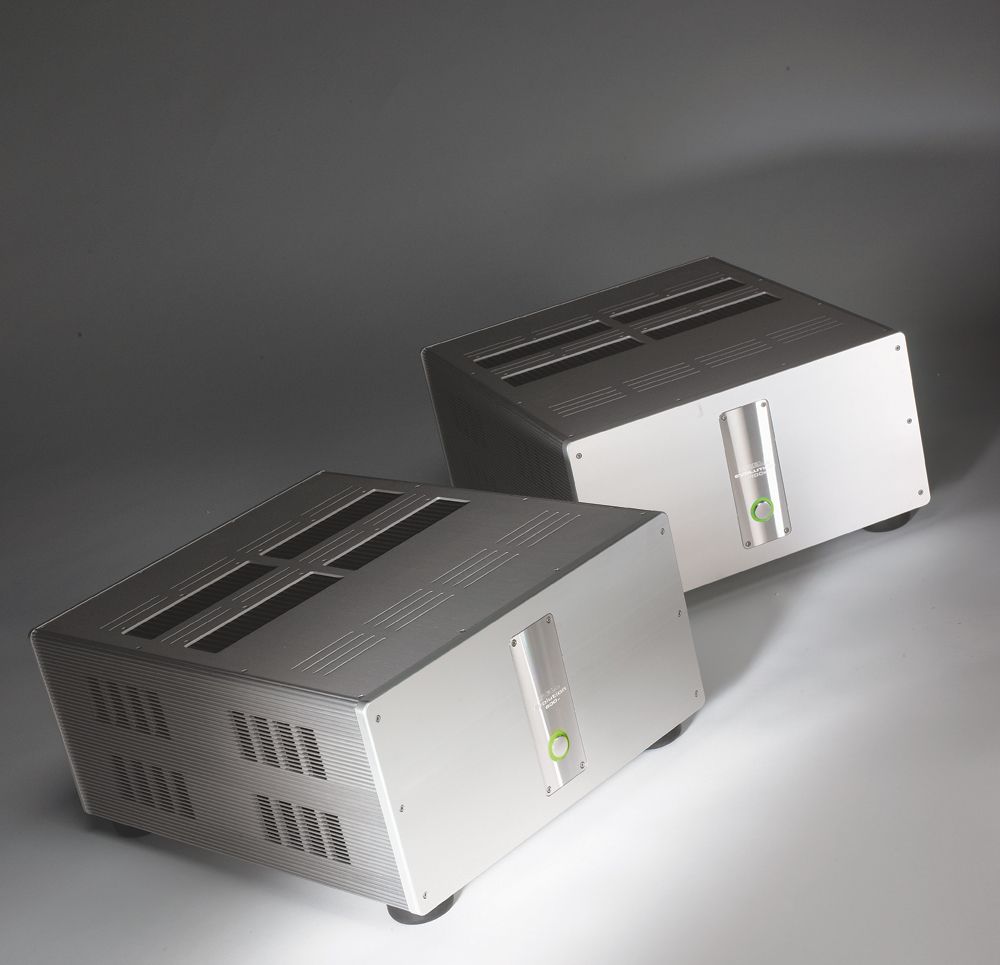



Frequency response 20 Hz to 20 kHz +0, -0.18 dB <0.5 Hz to 120 kHz +0,
-3 dB Signal-to-noise ratio >110 dB, wideband,
unweighted, referred to full power output >119 dB, "A"-weighted Gain 25.4 dB
Total harmonic distortion <0.02% at 1 kHz, at 600 W, 8 Ohms <0.15% at 20 kHz, at 600 W,
8 Ohms Input impedance Single Ended: 100 kOhms Balanced: 200 kOhms CAST: 70 Ohms Input sensitivity Single Ended or Balanced: 3.72 V rms CAST: 3.72 mA rms
The Evolution 600e monaural amplifier sits in the middle of the Evolution e Series. Powerful enough for almost any application, the Evolution 600e is the amplifier choice in many stereo and home theater systems worldwide. This power capability is coupled to a new green operating mode that reduces standby electrical draw to a mere 2 Watts. As with all Evolution amplifiers, the Evolution 600e development began with a question, "What is the most difficult scenario this amplifier will face?" The answer is a 2 Ohm speaker load. When the final design is complete, and the amplifier is presented with a typical 8 Ohm speaker, it practically coasts. This amplifier simply sings with this stress-free load connected.
Outputting a daunting 600 watts of power and coupled to Krell Evolution e Series circuit technology, the Evolution 600e is a velvet hammer. Power Supply The Evolution 600e is equipped 2 2,200 VA transformers and 108,000 µF. This power source is the backbone for the output of the Evolution 600e. With this foundation, the Evolution 600e delivers 600 watts into 8 Ohms, 1,200 watts into 4 Ohms, and 2,400 watts into 2 Ohms. The FTC mandates that power ratings are quoted using a 1,000 Hz sine wave into a fixed 8 Ohm resistor with final power specification stated at 1% distortion. Krell engineering considers this specification too lenient and not indicative of what an amplifier is required to provide. Krell designs to a much stricter standard. Our power tests use a 20-20,000Hz signal into 8, 4, and 2 Ohm loads with our final specifications stated for .1% distortion. Internal high-current line conditioning circuitry effectively blocks RF noise entering via the AC line and compensates for any asymmetry or DC offset in the power waveforms.
The amplifiers' low level and gain stages are powered via multi regulated rails that provide total immunity from supply fluctuations and assure noise-free circuit operation. Primary rail voltages are quasi-regulated, enabling an "on-demand" supply of power that is highly responsive to dynamic load. Circuitry Highlights Krell's new Active Cascode Topology™ is a significant departure from traditional amplifier circuits where the positive and negative rail voltages are each applied entirely across a single row of transistors. High voltage swing and gain requirements dictate that the transistors be "pushed" into non-linear operating regions and, in some cases, dangerously close to breakdown. Krell topology divides the full voltage swing across multiple rows of transistors, and all devices are active-biased (i.e., they all carry the audio signal). Because individual transistors in the cascode array "see" only a proportional fraction of the rail voltage, they operate in a region that provides optimum linearity, gain, and safety. And because the devices are not being pushed to their limits, the amplifier runs cooler and more reliably. The improved linearity and stability greatly reduces the need for negative feedback, which is known to cause sonic degradation. Krell Evolution power Amplifiers use only 14 dB of feedback throughout the topology-a small fraction of the amount implemented in typical designs.